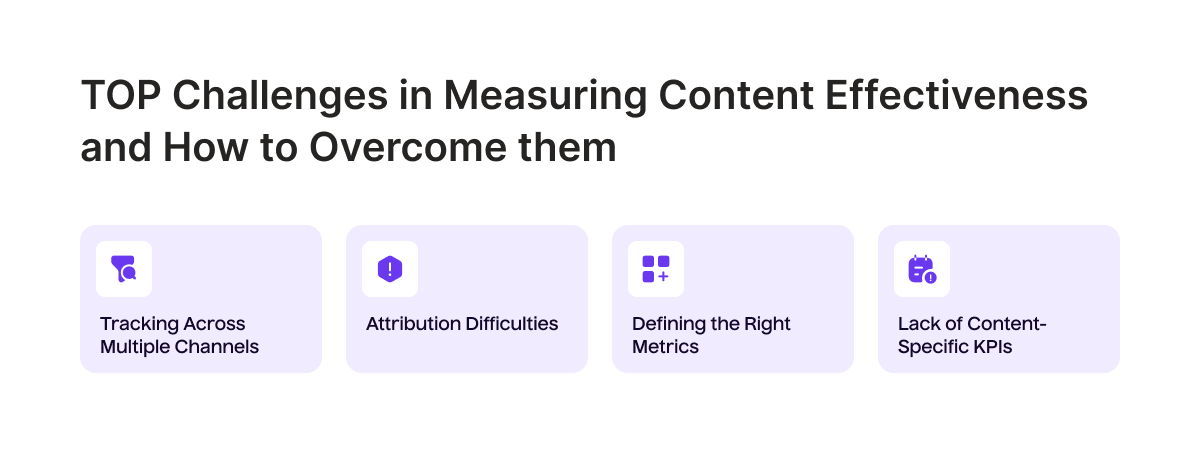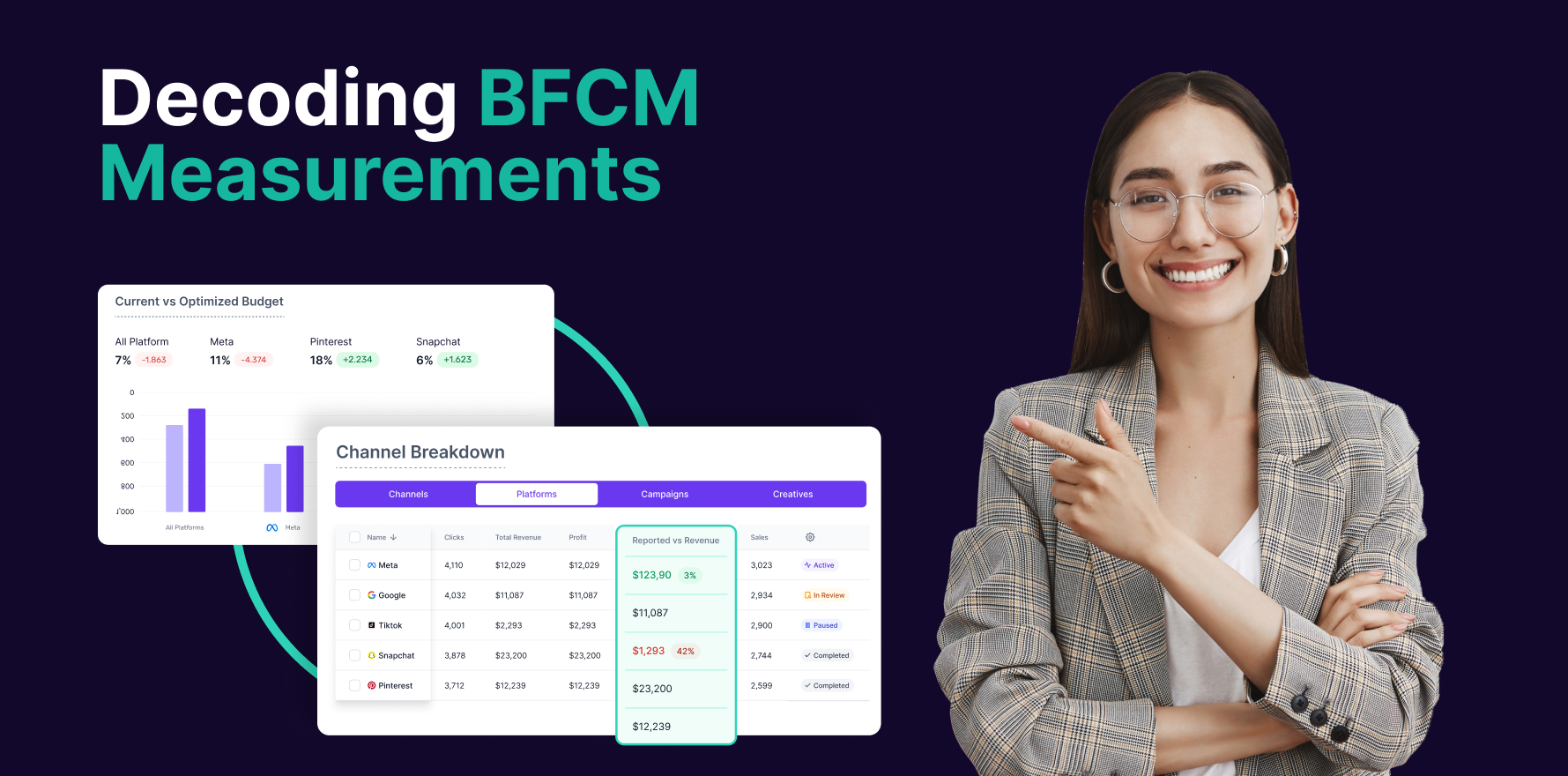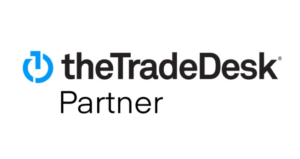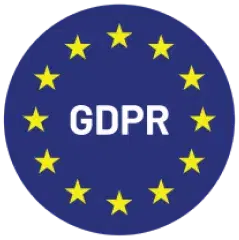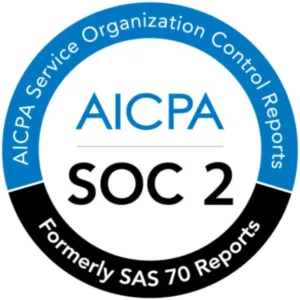Content isn’t just “king” anymore. It is the engine driving visibility, engagement, and conversions across every stage of the customer journey. In today’s market, where ad costs are rising and customer expectations are high, creating content is not enough. You need proof. Proof that your blog post, ad copy, email nurture, or social campaign is influencing awareness, generating leads, and driving revenue.
That’s where content marketing measurement comes in. It is the difference between guessing and growing. By tracking the right KPIs across channels and moving beyond siloed dashboards, you can clearly see what works, and double down on content that actually fuels pipeline growth.
Read More About: Marketing Measurement: A Guide to Models, KPIs and How it Works
What is Content Marketing Measurement?
Content marketing measurement is the process of evaluating the performance of content marketing efforts to understand their impact and effectiveness towards business goals. This includes assessing their role in converting leads, increasing revenue & conversion, decreasing the bounce rate, improving sessions, and tracking various metrics to determine how well the content performs against defined goals.
Why Measuring Content Marketing is Essential in 2025?
Content remains the cornerstone of marketing, serving as the key to conveying your message to audiences and persuading them to become customers. In 2025, with competition and customer expectations higher than ever, it’s crucial to measure the performance of your content across both online and offline channels.
Measuring performance by channel ensures you know exactly where your efforts are paying off and where to optimize.
Here’s why measuring your content marketing is essential:
1. SEO (Search Engine Optimization) and Content
Imagine you’re an SEO professional successfully driving a large volume of traffic to your website. However, despite the traffic, conversions remain low. This is where measuring how users engage with your content becomes critical. It’s not just about ranking in search engines; it’s about whether your content is relevant, engaging, and persuasive enough to move users along the journey.
Key metrics to monitor include:
- Bounce rate: A high bounce rate suggests visitors are not finding your content relevant or useful.
- Average time on page: Low time spent indicates your content may not be engaging enough to hold attention.
- Page navigation paths: Minimal navigation to other pages can mean your content is not encouraging users to explore further.
- Conversion rate (CVR): If this is low, your call-to-action (CTA) may not be compelling or clear enough to prompt clicks.
By tracking these insights, you can refine your content strategy, improving messaging, structure, and CTAs so your SEO efforts don’t just bring traffic but also drive meaningful outcomes.
2. Performance Marketing (Paid Advertising) and Content
If you run paid campaigns, measuring performance ensures that your investment delivers the desired results. The success of these campaigns depends heavily on the content behind them, including ad copy, headlines, landing pages, visuals, and calls-to-action. Strong, well-aligned content makes ads more persuasive and improves conversion rates, while weak or mismatched content can lead to wasted ad spend. Without proper tracking, you risk paying for clicks that generate traffic but fail to convert into meaningful outcomes.
Key metrics to monitor include:
- Click-through rate (CTR): A low CTR means your ad copy or creative may not be compelling enough to get clicks.
- Cost per click (CPC): High CPC may reflect weak messaging that fails to stand out, driving inefficiency.
- Conversion rate (CVR): If conversions are low, your landing page content or offer is not convincing users to act.
- Return on ad spend (ROAS): A low ROAS suggests your content is not generating enough revenue to cover ad costs.
- Cost per acquisition (CPA): High CPA shows your ad and landing page content are not optimized to convert efficiently.
- Incremental ROAS (iROAS): Evaluates how well past campaign content drove incremental returns.
- Marginal ROAS (mROAS): Helps forecast how future investment in new or optimized content could perform.
By continuously measuring and adjusting these metrics, you can align ad content and landing page experiences for maximum engagement, conversions, and efficiency.
3. Email Marketing and Content
Email remains a powerful channel for building relationships and driving conversions, but campaign success is not determined by strategy alone. The content of your emails matters most. Subject lines, body copy, visuals, and calls-to-action all influence whether recipients open, click, and convert.
Key metrics to monitor include:
- Open rate: Low open rates may indicate that your subject lines are not attention-grabbing or that your list targeting is weak.
- Click-through rate (CTR): Low CTR suggests that your email content or CTAs are not motivating recipients to engage.
- Conversion rate: Low conversions mean that your offer or landing page may not be aligned with your audience’s needs.
- Unsubscribe rate: A high rate shows that your emails may be irrelevant, too frequent, or not providing enough value.
- List growth rate: This shows whether your content-driven acquisition strategies are bringing in new subscribers.
By monitoring these numbers, you can refine both strategy and content to ensure your emails are relevant, engaging, and effective in driving ROI.
4. Social Media Marketing and Content
Social media is a powerful channel for building awareness, trust, and community, but campaign success does not come from platform strategy alone. The content you create and share matters most. Posts, captions, visuals, stories, and videos determine whether your brand captures attention, sparks interaction, and encourages deeper engagement.
Key metrics to monitor include:
- Engagement rate : Low engagement means your content may not be sparking interaction from your audience.
- Reach and impressions : Limited reach may indicate that your posting frequency, timing, or platform optimization is not supported by engaging content.
- Click-through rate (CTR) : Low CTR shows that your social content is not effectively driving traffic to your website or landing pages.
- Follower growth rate : Stagnant growth suggests that your content strategy is not attracting new audiences.
- Social share of voice (SOV) : Low SOV means your brand presence is overshadowed by competitors in conversations and mentions.
By measuring these metrics and refining your creative approach, you can ensure your content resonates on each platform, strengthens your brand’s presence, and builds a more engaged community.
Vanity Metrics vs Advanced Metrics to Measuring Content Marketing Success
Common Vanity Content Marketing Measurement Metrics
Many content marketers track performance using vanity metrics, which are numbers that look good on paper but fail to give meaningful insight into the true success of a campaign.
1. Click-Through Rate (CTR)
While CTR measures how often people click on your content’s links, it often focuses only on surface-level engagement. CTR can be misleading, as it doesn’t tell you anything about the quality of that traffic or whether the visitors are actually converting or adding value to the business.
2. Bounce Rate
A high bounce rate can seem like a problem, but it doesn’t always mean that your content is ineffective. Visitors may leave a page without interacting, but it doesn’t mean they didn’t absorb valuable information. For example, they may have found what they needed right away.
3. Sessions
High session counts can be exciting, but this number can easily be inflated by irrelevant or short visits. Simply attracting visitors doesn’t indicate that your content is truly engaging or contributing to business goals.
4. Engagement Rate
While engagement rate captures likes, shares, and comments, it’s not a true reflection of how much your content is driving deeper actions like conversions or sales. Engaging content doesn’t always equal profitable content.
5. Average Time on Page / Session Duration
Longer time on page isn’t always a win. Visitors might stay on a page simply because they are confused, trying to find the information they need, or bouncing between tabs. Time on page needs to be assessed alongside other key metrics for full context.
6. Lead Generation
Lead generation metrics can provide valuable insights, but only if you are tracking quality leads. Raw numbers of signups or downloads without analyzing lead quality or nurturing can skew your understanding of your content’s effectiveness.
7. Customer Acquisition Cost (CAC)
CAC can be a misleading metric if you aren’t factoring in the full funnel. It’s possible to lower CAC by generating low-quality leads or pursuing a strategy that doesn’t have long-term sustainability. It’s not just about how much you spend but the value you get in return.
8. Conversion Rate
Conversion rate is often used to gauge content effectiveness, but it’s not a perfect metric if the traffic driving those conversions isn’t qualified. A high conversion rate from irrelevant or non-targeted traffic can make the metric look good but fail to reflect your content’s true impact.
Advanced Content Marketing Measurement Metrics
To get a clearer, more accurate picture of content marketing performance, it’s crucial to go beyond these vanity metrics and focus on advanced metrics that offer deeper insights into how your content contributes to actual business outcomes. Some advanced metrics every content marketer should track include:
1. Incremental Return on Ad Spend (iROAS)
Unlike basic ROAS, which tracks overall returns, iROAS measures the incremental impact of each marketing dollar spent. It isolates the additional revenue generated by your content marketing efforts, giving you a better understanding of how effectively your budget is being used.
2. Marginal Return on Ad Spend (mROAS)
Marginal ROAS metric helps you forecast future returns on your content marketing investments. It’s a predictive measure that tells you the expected return on new content initiatives based on past performance.
3. Incremental Customer Acquisition Cost (iCAC)
iCAC offers a refined view of customer acquisition by measuring how much you spend to acquire customers who wouldn’t have converted without your content. It allows you to assess whether your content marketing is driving incremental growth in a cost-effective manner.
4. Customer Lifetime Value (CLTV)
CLTV measures the total revenue a customer generates throughout their relationship with your brand. This metric helps you understand how your content is building long-term value and fostering customer loyalty.
What are the Challenges in Measuring Content Marketing Effectiveness and How to Overcome them?
1. Tracking Across Multiple Channels
Challenge
Content performance data often sits in silos dashboards like SEO tools, email platforms and social media dashboards, making it hard to see the full picture.
Solution
Use a centralized analytics dashboard or marketing attribution tool to consolidate data across all channels for a unified view.
2. Attribution Difficulties
Challenge
It’s hard to determine which piece of content actually influenced a conversion, especially in long customer journeys.
Solution
Due to increasing privacy restrictions, traditional multi-touch attribution (MTA) models have become increasingly ineffective. Privacy measures, such as cookie restrictions and data sharing limitations, hinder MTA’s ability to track users across multiple touchpoints, making it harder to accurately assign value to different pieces of content.
As a result, it’s crucial to shift towards advanced attribution techniques, which offer more reliable insights:
2.1 Causal Attribution
Causal attribution uses statistical methods to establish a clear cause-and-effect relationship between marketing activities and conversions, bypassing the issues caused by privacy restrictions. Unlike MTA, which relies on user tracking, causal attribution focuses on isolating the true drivers of conversions without infringing on user privacy.
2.2 Incrementality Testing
Incrementality testing focuses on measuring the true impact of marketing efforts by comparing exposed versus unexposed groups. It helps determine how many conversions would not have occurred without a particular marketing activity, providing a clearer understanding of campaign effectiveness, even in the absence of granular tracking data.
By adopting these advanced methods, you can better understand your marketing performance and make informed decisions, all while respecting privacy regulations.
3. Defining the Right Metrics
Challenge
Many teams track vanity metrics (e.g., likes, impressions) that look good but don’t reveal true business impact.
Solution
Tie metrics directly to business objectives. For example, if your goal is lead generation, focus on form submissions, gated content downloads, or qualified leads, not just traffic numbers.
4. Lack of Content-Specific KPIs
Challenge
Some companies use generic KPIs that don’t reflect content’s role in the buyer’s journey.
Solution
Create stage-specific KPIs, for example, measure engagement for awareness content, lead quality for consideration content, and conversion rate for decision-stage content.
What are the New Techniques and Methodologies in Content Marketing Measurement?
The Challenge with Siloed Measurement
Traditional content performance tracking is fragmented.
- Websites → Google Analytics 4
- Ad Campaigns → Google Ads dashboard
- Email Marketing → ESP dashboards (HubSpot, Mailchimp, etc.)
- Offline (OOH, Print, Events) → Often anecdotal or survey-based
The problem with these siloed tools is that they rely heavily on last-click attribution models, which are highly biased. They tend to give full credit to the final interaction (like a paid ad or last email clicked) while ignoring the influence of earlier touchpoints such as blogs, social posts, or events.
This makes it difficult to see how different types of content actually work together across the customer journey. Each channel provides its own KPIs (CTR, conversions, engagement), but without a unified view, marketers are left with a skewed picture of content’s true ROI.
Unified Marketing Measurement (UMM) as the Solution for Content Marketing Measurement
A Unified Marketing Measurement (UMM) Platform integrates data from online and offline channels into a single measurement framework. Unlike traditional analytics or channel-specific dashboards, UMM focuses on both content effectiveness and overall marketing effectiveness.
UMM is the combination of Marketing Mix Modeling (MMM), Incrementality Testing, and Causal Attribution. This helps UMM track more than clicks and impressions. It measures how different forms of content contribute across the funnel, whether a blog drives brand lift at the top, a video influences mid-funnel engagement, or an email nurtures repeat purchases. By unifying these insights, UMM shows not just if content worked, but how and why it worked in driving outcomes.
What makes UMM different from traditional analytics tools is that it goes beyond last-click and even multi-touch attribution models, which are often biased and incomplete. By combining these advanced methods, UMM not only tracks where interactions happened but also reveals what truly caused the outcome, whether a blog driving brand lift, an ad influencing mid-funnel conversions, or an email nurturing repeat purchases.
With UMM, content marketers gain:
- Clear visibility into content’s true impact across the funnel
- Ability to prove ROI beyond clicks and impressions
- Data-driven insights to optimize content strategy
- Confidence to allocate budgets more effectively
- Balance between short-term engagement and long-term growth
In short, UMM is the timely solution because it gives marketers causal clarity, moving from biased, click-based reporting to evidence-backed measurement of content’s true ROI.
Key Benefits of Using UMM in Content Marketing Measurement
- Tracks how different types of content contribute across the funnel
- Reveals the true role of content in driving brand lift, engagement, and conversions
- Moves beyond vanity metrics to measure content’s causal impact
- Helps prioritize and optimize high-performing content formats and topics
- Demonstrates clear ROI of content to stakeholders
Why is UMM More Than Just Content Measurement?
- Identifies which marketing strategy works best for each channel
- Shows which channels drive awareness versus which drive conversions
- Evaluates the effectiveness of both online and offline marketing activities
- Forecasts revenue impact of future campaigns with data-driven precision
- Provides a unified view of performance across campaigns, content, and channels
- Guides smarter budget allocation by revealing true ROI
What are Ways to Measure Your Content Marketing Effectiveness?
Measuring content marketing effectiveness can be approached at different levels depending on your team’s maturity, goals, and available tools. Some methods are quick and straightforward, while others require advanced analytics and unified measurement frameworks.
1. Simple Ways to Measure Content Marketing Effectiveness
The simple way to measure the effectiveness of your content is to track the content-related metrics for each channel using their respective siloed tools (e.g., Google Analytics for websites, Google Ads for campaigns, email dashboards for newsletters).
Some common engagement and interaction metrics include:
- Time on Page – How long users stay on your content pages.
- Bounce Rate – Percentage of visitors who leave after viewing just one page.
- Exit Rate – Where users most frequently exit your site.
- Likes, Comments, and Social Shares – Indicators of how well your content resonates on social platforms.
- Click-Through Rate (CTR) – How many people click on links, CTAs, or ads.
- Scroll Depth – How far visitors scroll down a page, showing how much content they consume.
- Form Fills – Leads generated through gated content, sign-ups, or inquiries.
- PDF/Asset Downloads – Engagement with whitepapers, eBooks, or case studies.
These metrics provide a channel-level view of content effectiveness, but they often fail to show the bigger picture across the customer journey.
2. Advanced Ways to Measure Content Marketing Effectiveness
The advanced ways to measure content marketing effectiveness use methodologies that move beyond siloed dashboards and focus on content’s contribution to the overall marketing strategy.
Unified Marketing Measurement (UMM) Framework
- Combines online and offline data into a single system.
- Integrates metrics from websites, ads, emails, CRM, call centers, and even OOH/print campaigns.
- Uses multi-touch attribution, media mix modeling, and incrementality testing to evaluate how content drives engagement, conversions, and long-term growth.
- Provides a holistic view of marketing effectiveness, not just channel-specific results.
How UMM Works for Content Marketing Measurement?
Here’s how each component of UMM works and the value it provides to content marketers:
1: Integrate Data Across Channels
Integrate Data Across Channels gives content marketers a single source of truth, connecting online and offline data so they can see how all touchpoints work together.
- Combines web, ads, social, CRM, retail, and offline media data.
- Standardizes campaign/content naming and taxonomy.
- Resolves identities where possible to track journeys across channels.
- Validates accuracy by reconciling with finance and sales records.
2: Apply Marketing Mix Modeling (MMM)
Marketing Mix Modeling gives content marketers long-term strategic insights, showing how content investments contribute to revenue and brand growth.
- Uses regression to account for seasonality, pricing, and promotions.
- Captures carryover and saturation effects for realism.
- Separates base sales from incremental lift.
- Establishes benchmarks for channel and content effectiveness.
Suggested Read: Best Marketing Mix Modeling Tools in 2025
3: Use Incrementality Testing
Incrementality Testing gives content marketers proof of impact, isolating what content truly drives lift versus what would have happened anyway.
- Designs controlled experiments with geo or audience holdouts.
- Predefines metrics such as brand lift, leads, or revenue.
- Runs campaigns with minimal overlap or contamination.
- Measures lift and compares outcomes to MMM estimates.
4: Leverage Causal Attribution
Causal Attribution gives content marketers granular visibility into which formats, audiences, and placements cause outcomes.
- Applies causal inference techniques (e.g., uplift modeling, DiD).
- Defines exposures as treatments and compares to control groups.
- Attributes impact at creative, audience, or placement level.
- Calibrates granular findings with MMM’s macro-level results.
5: Track Funnel-Level Impact
Tracking Funnel-Level Impact gives content marketers the ability to see performance at every stage of the funnel and align strategy accordingly.
- Awareness: reach, search demand, brand lift.
- Consideration: engaged sessions, assisted conversions, leads.
- Conversion: incremental orders, revenue, pipeline contribution.
- Builds response curves to set funnel-stage KPIs tied to business goals.
6: Forecast Future Performance
Forecasting Future Performance gives content marketers predictive power, helping them plan more effectively and allocate budgets with confidence.
- Uses MMM elasticities, causal lift estimates, and seasonality.
- Simulates scenarios with planned budgets and content calendars.
- Applies saturation and carryover effects for realistic outcomes.
- Forecasts awareness, engagement, and revenue with confidence intervals.
Best UMM Tool to Measure Content Marketing Effectiveness
Lifesight’s Unified Marketing Measurement Tool
Lifesight is a leading Unified Marketing Measurement (UMM) platform that integrates advanced measurement methodologies such as Marketing Mix Modeling (MMM), Incrementality Testing, and Causal Attribution into one cohesive framework to deliver actionable, data-driven marketing insights. It is designed to help marketers accurately gauge the impact of their efforts across both digital and offline channels and optimize budget allocations for maximum ROI
Lifesight has also introduced a Unified Reporting module along with its Marketing Intelligence Agent (MIA), an AI-powered assistant that provides prescriptive, real time recommendations and automates decisioning such as pausing underperforming campaigns or rebalancing budgets to streamline execution.
Key Features
Feature |
Description |
|---|---|
| Unified Reporting | Cross channel, single dashboard visibility |
| Channel and Campaign Analysis | Identifies what is driving and what is lagging |
| Budget Reallocation | Intelligent budget planning using incremental data |
| Incrementality Testing | Validates true impact via experiments |
| Scenario Planning and Forecasting | “What if” simulation and predictive modeling |
| AI Agent (MIA) | Prescriptive, automated insights and actions |
| Full Funnel Coverage | Digital and offline measurement from awareness to conversion |
| Seasonality and Promotions Logic | Adjusts recommendations for external market patterns |
Read More About: Best Marketing Measurement Tools in 2025
Conclusion
Content marketing plays a central role in convincing buyers to choose your product or service, but without measurement it is just noise. The winners in 2025 will be the marketers who treat content as both an art and a science: creative storytelling backed by hard data.
Start with clear goals, track the right funnel-specific KPIs, and unify your view across SEO, ads, email, and social. Then take it further with Unified Marketing Measurement (UMM) to connect content directly to business impact such as brand lift, conversions, and retention.
Platforms like Lifesight make this advanced measurement accessible, giving marketers a privacy-first, real-time view of how every piece of content contributes to ROI. The future is not just about creating more content. It is about proving content’s impact and optimizing for growth.
FAQs
1. What tools can small businesses use for content measurement?
Free tools like Google Analytics, Search Console, and built-in email/social dashboards work well.
2. How do I know if my content is underperforming?
Look for declining engagement, time spent on the page, bounce rate, scroll depth, low conversions, or stagnant traffic despite regular publishing.
3. What’s the risk of ignoring content measurement?
You waste budget on ineffective content and miss opportunities to scale what actually works.
4. Is it possible to measure offline content impact?
Yes, by using methods like unique promo codes, QR tracking, or event-based surveys integrated into attribution models.
5. Should content measurement vary by industry?
Yes. B2B measurement often emphasizes lead quality, pipeline influence, and deal acceleration, while B2C prioritizes engagement depth, purchase conversions, and customer lifetime value.
6. What’s the biggest mistake in measuring content?
Relying only on vanity metrics like impressions or likes instead of aligning KPIs with business outcomes.
Essential resources for your success

